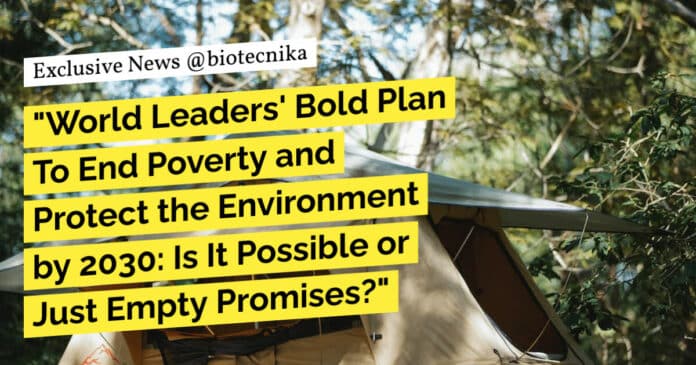
World leaders have recommitted to the ambitious plan to end poverty and protect the environment by 2030, despite the fact that progress has fallen short so far. The United Nations’ 17 Sustainable Development Goals (SDGs) were outlined in 2015, but none of these goals will be met by the self-imposed deadline. Scientists have pointed out that governments and leaders are better at making promises than keeping them. However, there is some hope that the SDG agenda is making an impact. A political declaration approved during the UN SDG Summit in New York on 18 and 19 September reaffirms that these goals are the world’s overarching roadmap for the future. The agreement states that urgent action is needed to achieve the SDGs, which cover people, planet, prosperity, peace, and partnership. UN Secretary-General António Guterres has proposed increasing funding for sustainable development by at least $500 billion annually to assist countries in achieving these goals. This includes financial aid such as debt relief for the poorest nations to help them recover from economic shocks.
While there is evidence that governments are falling short of the goals, there are still signs of progress. Researchers analyzing the targets that accompany the SDGs found that
only two out of 36 targets are on track to be achieved: increased access to the internet and mobile-phone networks. Conversely, targets in areas such as food security, vaccine coverage, and greenhouse-gas emissions are showing little to no progress and are even moving in the wrong direction. Without further action and resources, it is unlikely that the goals will be achieved even by 2050, which is two decades past the original deadline. To address this, Paula Caballero, a former Colombian diplomat involved in creating the SDG framework, emphasizes the need for bold and transformational action. She also highlights that while 2030 should not be seen as a final deadline, it serves as an important milestone.Shirin Malekpour, a sociologist and author of the Global Sustainable Development Report, also acknowledges the importance of the political declaration. She believes that if countries integrate the SDGs into their national policies and develop plans for accelerated action, significant progress can be achieved. Caballero adds that the SDG summit demonstrates that the goals are helping to shift focus onto the integrated nature of the challenges facing humanity. However, she cautions against treating sustainable development and climate change as separate issues, pointing out that addressing climate change is crucial to achieving the SDGs. While the Paris climate agreement and the SDGs were established separately, they are interconnected and must be tackled together.
In conclusion, world leaders have recommitted to the 2030 plan to end poverty and protect the environment, acknowledging that progress has fallen short so far. Despite this, there are signs of hope and the SDG agenda is still regarded as the guiding framework for the future. However, achieving these goals will require bold action, increased funding for sustainable development, and the integration of the SDGs into national policies. It is crucial to recognize the interconnectedness of sustainable development and climate change, as both issues need to be addressed together in order to succeed.
Keywords: Sustainable Development Goals, SDGs, poverty, environment, United Nations, world leaders, commitment, progress, funding, climate change, integration, global challenges.


























